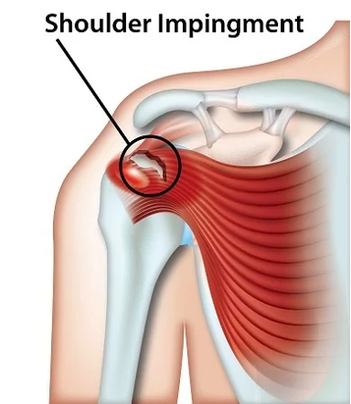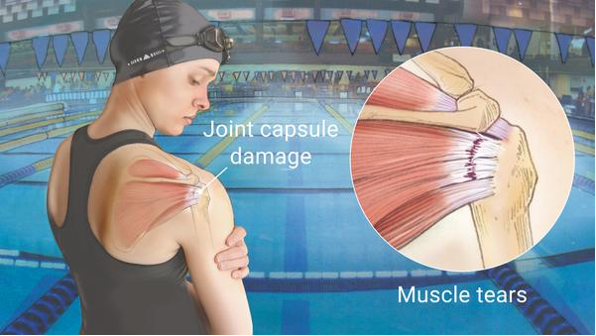 By: Mike Staszak Shoulder impingement is the pinching of one of your rotator cuff tendons (most commonly supraspinatus) against a bone called the acromion process when certain movements are performed such as reaching overhead and behind the back. In a normal, healthy shoulder the supraspinatus tendon has plenty of room to move freely without getting pinched when you perform shoulder motions and activities. In rare occasions some people have a congenitally larger acromion process which causes a higher likelihood for shoulder impingement. In most cases, however, shoulder impingement is brought on over time by poor shoulder mechanics and posture, weak shoulder stabilizer muscles, and muscle tightness around the shoulder. What can be done to improve shoulder impingement? The first step to correcting shoulder impingement is improving one's posture. Forward shoulder posture puts the shoulder in more of an impingement position by narrowing the joint space where the rotator cuff tendon is, thus increasing the likelihood for it to get pinched on the acromion process with certain shoulder movements. Next, we need to work on loosening up all of the tight soft tissue around the shoulder; the pectorals, upper trapezius, lat, and the posterior rotator cuff muscles that pull the shoulder forward into an impingement position if they aren’t flexible. This can be achieved both with manual therapy applied by a physical therapist and by the person stretching the tight muscles around their shoulder. Corrective Exercises > The last piece involves shoulder blade and rotator cuff muscle strengthening, but it's critical to do this with your shoulder in the correct position. This is not as easy as it sounds; there are many small muscles that must work together in a coordinated manner to move the shoulder joint without pinching any of the tendons running through the joint space. The specificity in which you do these exercises is critical; if you're not doing them correctly it can actually compound the problem. No pain, no gain is not an adage to work by when addressing shoulder impingement. -- The best plan if you have shoulder or upper arm pain is to see a physical therapist for help. Sometimes trying to work it out on your own can make the problem worse. About Mike Staszak Michael Staszak has been an outpatient orthopedic physical therapist for the past 27 years. He is the owner of Staszak Physical Therapy & Wellness Center in Eugene. He and his staff believe that the more people understand how their bodies work and learn proper body mechanics, the less likely they are to become injured again. With this commitment to patient education, Michael provides wellness articles and presentations for businesses and community members. Photos from SportNova UK, MayoClinic
0 Comments
Leave a Reply. |
Evolve Fitness StudiosCheck out posts from our trainers, healthy recipes, and tips for staying motivated and more! Categories
All
|


 RSS Feed
RSS Feed
